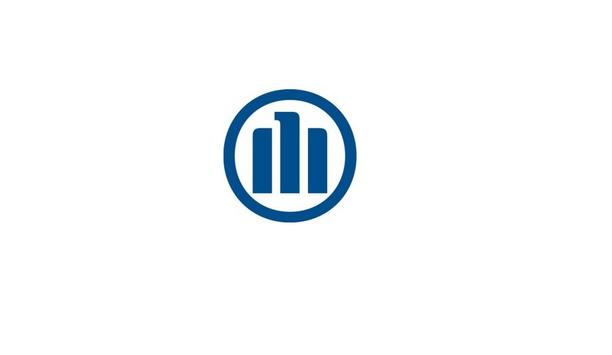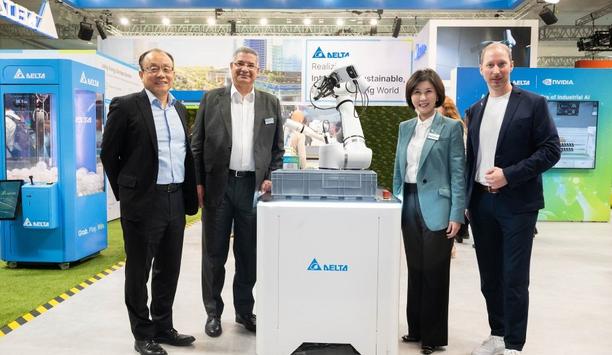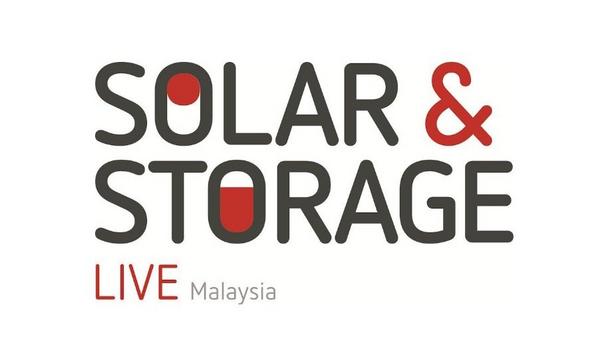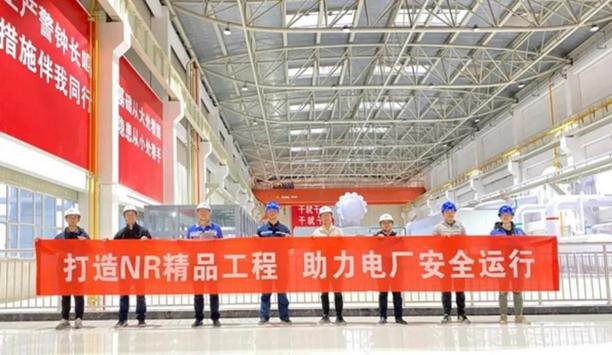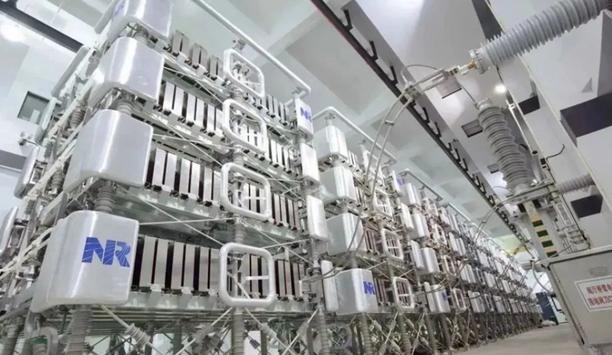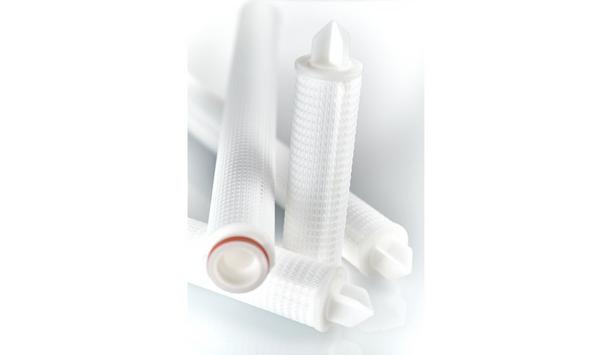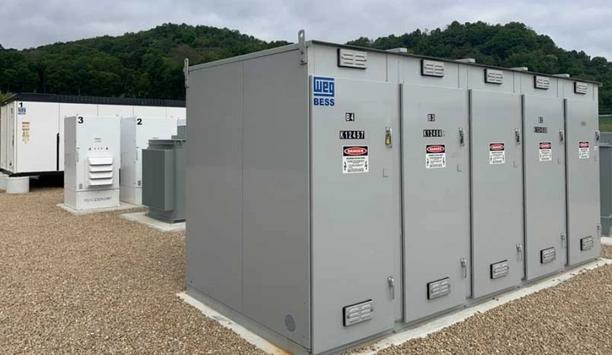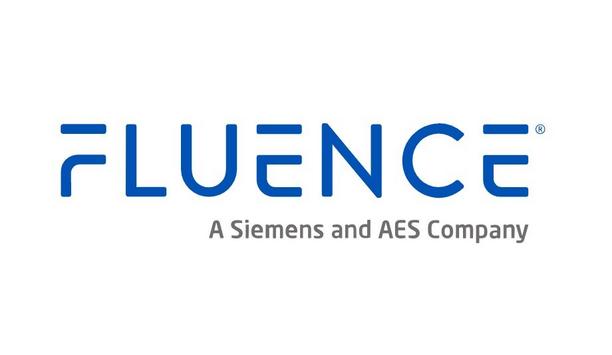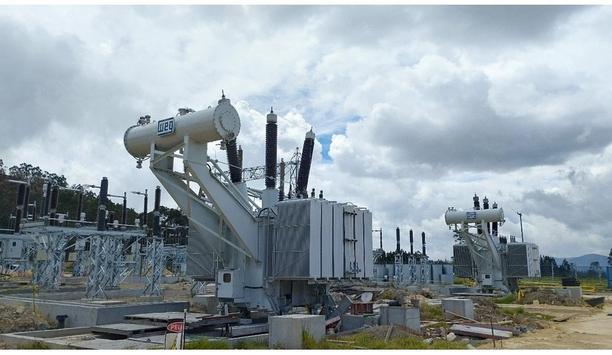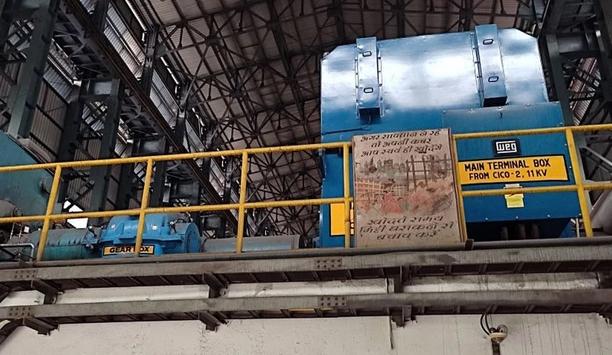Renewable Energy
News
On May 30, the first 100MWp tidal photovoltaics power station in China was connected to the grid with full capacity. This is the first time that China has complementary developed solar and tidal energy. The successful grid connection of this power station marks that China has made new achievements in the field of comprehensive utilization of marine energy. NR Electric provides a complete set of protection and monitoring equipment for the project, and implements the engineering integration of 110kV multi terminal differential (four terminal differential) line protection and 5MW/5MWh energy storage primary frequency modulation system. Frequency modulation system This project is the first PV power station in Zhejiang Province to synchronously constructe and install 5MW/5MWh energy storage system. Goose communication is used inside the energy storage system to realize the millisecond fast response The whole station has achieved a high level of automation. In conjunction with Zhejiang Electric Power Research Institute, the first photovoltaic power station fast frequency modulation pilot project was officially comissioned, which perfectly upgraded the coordination among energy storage, SVG and inverter. Goose communication is used inside the energy storage system to realize the millisecond fast response of primary frequency modulation with photovoltaics and energy storage. Power station reservoir area Zhejiang Wenling tidal PV Power Station is located in Jiangxia Tidal Power Station and Reservoir Area, Taizhou , Zhejiang. The total area of the reservoir area is about 1.33 km. The rated installed capacity is 100MWp. The project implements a new construction model of "new green energy tidal energy + solar energy", makes full use of the water surface of the power station reservoir area. After being connected to the grid, it is estimated that the annual average on-grid power generation will be about 106.87 million kWh, which will save 32,600 tons of standard coal every year.
On June 8, 2022, NR controlled switching device was successfully put into operation in Fengning pumped storage power station with the largest installed capacity in the world, which successfully ensured that the pumping and storage power station units were connected to Zhangbei flexible DC power grid. This is the first application of NR's controlled switching device in a large-scale pumped storage project. Fengning pumped storage power station is a key project serving the Beijing Winter Olympics to achieve 100% green power supply. It is the first time that the pumped storage power station connected to the flexible DC power grid, which provide a valuable solution to solve the problem of large-scale development and utilization of renewable energy. Transformer charging excitation Fengning pumped storage power station is known as the world's largest "super power bank", close to the core area of the 10 GW wind power base. The power station is equipped with 12 units, with a total installed capacity of 3.6 GW, an annual saving of 480,000 tons of standard coal and a reduction of 1.2 million tons of carbon dioxide emissions. NR has cooperated with customer to discuss the issues of main transformer charging excitation In order to reduce the impact of the main transformer switching of Fengning Pumped Storage Power Station on the flexible DC system in Zhangbei, NR has cooperated with customer to discuss the issues of main transformer charging excitation inrush current and voltage harmonics, and proposed a solution for adding controlled switching device on all 500kV transformer sides circuit breakers of pumped-storage power stations. Main transformer switching In order to meet the complex "pumped storage + flexible DC" excitation inrush current suppression requirements, NR has comprehensively considered factors such as the harsh working conditions of two main transformers in parallel, the mechanical dispersion of circuit breakers, transformer parameters, and remanence level. Before the main transformer was officially put into operation, a large amount of test data was collected, and simulation calculation research was fully carried out. The main transformer switching test of 1, 2, 9 and 10 units successfully suppressed the maximum inrush current from more than 1000A to less than 300A, effectively reducing the busbar voltage distortion and system harmonic content. The pumped-storage power station can be reliably integrated into the flexible DC grid under the impact disturbance of the main transformer switching. Advanced power system With the construction and development of an advance power system with a high proportion of renewable energy and power electronic device connected to the grid, the need for grid stability to suppress harmonics and disturbances has become prominent. As an important technical means to mitigate transient shocks, controlled switching technology will also face more opportunities and challenges. NR will continue to develop high-quality product and solution to make more efforts for power system reliability and flexibility.
Tingshan Frequency Converter Station of Hangzhou Flexible Low Frequency Transmission Pilot Project has been officially put into operation. It is the first time in the world to realize 220kV voltage level power frequency and low frequency controllable transformation. Flexible low-frequency transmission is a new type of AC transmission technology whose frequency is lower than the power frequency, which can effectively improve the transmission capacity, distance and efficiency of transmission lines. It has certain application advantages in medium and long distance offshore wind power transmission. Low-frequency transmission technology In order to optimize the power grid layout in Hangzhou, and explore the application prospect of flexible low-frequency transmission technology in urban high-density load areas, State Grid Zhejiang Company has planned and built Hangzhou flexible low-frequency transmission Pilot project in Hangzhou. Zhejiang Company has planned and built Hangzhou flexible low-frequency transmission Pilot project in Hangzhou The two high-voltage and high-capacity frequency converter stations in Tingshan and Zhongbu constructed in the project will form flexible low-frequency interconnection, which can realize flexible power flow mutual aid and asynchronous interconnection of the two major power grids in Fuyang and the south of Xiaoshan, improve the transmission capacity and flexibility of the two major power supply sections of 500kV Fuyang substation and 500kV Shengguang substation, improve the security and stability of the regional power grid. Low-frequency transmission project Tingshan Frequency Converter Station is the first high-voltage and high-capacity low-frequency converter station in the world, and also an important part of Hangzhou flexible low-frequency transmission project. The NR project team has tailored flexible low-frequency protection & control system, frequency conversion valve, low-frequency AC protection device, measuring equipment and other core complete sets of equipment for Tingshan frequency conversion station. In view of the high voltage and large capacity application scenario of Hangzhou Flexible Low Frequency Transmission Project, the project team put forward efficient start stop control strategy, steady state control strategy, low-frequency open phase operation control strategy, fault ride through strategy, frequency converter protection strategy and low-frequency AC protection scheme, which solved many problems such as low-frequency decoupling control, bridge arm balance control, fault current suppression, low-frequency open phase operation, etc. Advance power system NR has carried out fruitful research and exploration in the field of building an advance power system At the same time, the project team overcame the problems of synchronous pressurization of converter valve at power frequency and low-frequency, completed the insulation test between high-voltage and high-capacity frequency converter valve power frequency and low-frequency terminals for the first time. To build an advance power system with renewable energy as the main body has become the main development direction of the power industry. As a key high-tech enterprise, NR has carried out fruitful research and exploration in the field of building an advance power system. Flexible low-frequency equipment The complete set of flexible low-frequency equipment developed by NR has been successfully applied to Taizhou flexible low-frequency transmission project, and continues to serve the grid connected transmission of offshore wind power in Dachen Island. Hangzhou Flexible Low Frequency Power Transmission Project is an active attempt to apply flexible low frequency complete equipment to the construction of high elastic power grids in urban areas, and also provides a practical model for high-voltage and high-capacity offshore wind power transmission through low frequency. NR will continue to maintain high standards and quality to serve the project construction, give full play to its advantages, ensure the overall operation of the project, and continue to contribute to the construction of an advance power system.
Rethinking filtration: with BECO® Helix depth filter cartridges, Eaton's Filtration Division introduces a completely new approach to liquid filtration. These innovative depth filter cartridges provide a double depth filtration effect, significantly higher particle-holding capacity, and a longer service-life compared to other pleated depth filter cartridges. This performance is made possible by the unique helix wrapping of the pleated polypropylene (PP) fleece layers. BECO Helix depth filter cartridges The fine fleece layers provide reliable separation in particle, clarifying, and fine filtration The innovative structure and the graduated, thin fleece layers from coarse to fine, maximize the filter surface area and allow optimal flow with low pressure differentials. The funnel effect and high mechanical stability of the graduated fleece layers make BECO Helix depth filter cartridges excellent for backwashing. The fine fleece layers provide reliable separation in particle, clarifying, and fine filtration, while also protecting downstream membrane filter cartridges. Variety of different applications and filter housings Available in various lengths, with all common adapter designs and gasket materials, the BECO Helix depth filter cartridges ensure safe use across a variety of different applications and filter housings. The depth filter cartridges have a filter area of 0.7 square meters per 10-inch element, they are available with retention rates from 0.6 to 10.0 µm, and are available immediately. Regeneration and sterilization instructions "The BECO Helix depth filter cartridge with a retention rate of 0.6 µm was specifically designed for bottling processes in the beverage industry. It protects downstream membrane filters from clogging substances and significantly extends their service-life, provided the regeneration and sterilization instructions are properly followed," explains Elke Brandscheid, Team Leader Technical Service & Product Manager Filter Cartridges of Eaton's Filtration Division. The CIP and SIP capability (Clean-in-Place and Sterilize-in-Place) of the BECO Helix depth filter cartridges also makes them well-suited for this application, while their backwashability, even with hot water, further extends the service-life and reduces operating costs. Eaton’s long-standing expertise Eaton’s long-standing expertise in filtration for industries like cosmetics and fine chemicals All BECO Helix depth filter cartridges provide a beta ratio of ≥ 5,000 or a retention efficiency of ≥ 99.98%. These food-grade depth filter cartridges have been carefully developed through extensive research, drawing on Eaton’s long-standing expertise in filtration for industries such as food & beverage, cosmetics, and fine chemicals. The innovative design of the BECO Helix depth filter cartridges enables optimized filtration with extended service life, reduced operating costs, and more sustainable material use. CIP and SIP compatible backwashability CIP and SIP compatible backwashability, with a wide range of applications: BECO Helix depth filter cartridges, available in various retention rates and made from polypropylene, provide a safe and efficient solution for pre-filtration and fine filtration across diverse industries. Double depth filtration effect and maximum particle-holding capacity: The unique helix wrapping increases the filter surface area and mechanical stability, resulting in significantly improved filtration performance and extended service-life for the depth filter cartridges.
Expert Commentary
Fleet electrification provides opportunities to achieve climate goals while delivering social, financial, and environmental benefits to individuals, businesses, and communities, but the road to successful EV implementation is not without obstacles. Your EV fleets need to work — all the time under varying conditions — to ensure optimal uptime while maintaining energy efficiency. Consequently, electric vehicle service equipment (EVSE) can’t just be “tacked onto” your existing operation. Rather than a “new standalone addition,” it requires a thoughtful and forward-looking approach to seamlessly integrate into your overall facility. Ensuring the type of reliable power needed for an electrified fleet is critical. Luckily, there are a number of new and emerging solutions that promise to deliver clean and reliable local power generation. The Challenges The availability and reliability of the power needed to support electrified fleets is a primary roadblock for many commercial fleet operators. It’s important to look at where that power comes from, how much it will cost, and whether it will be available when needed. Projections indicate that the demand for electricity will surge by 50% during the next two decades Today’s energy landscape is complex. Projections indicate that the demand for electricity will surge by 50% during the next two decades, with no signs of slowing down. According to Grid Strategies, the U.S. electric grid is not prepared for this level of significant load growth. The sheer amount of power needed to keep trucks charged and running 24/7 can be substantial. This poses a key risk for reliability in EV infrastructures, particularly in mission-critical situations. In addition, most fleet operators have become accustomed to fairly predictable fuel costs, since many take advantage of long-term supply arrangements. By contrast, electricity grid costs can vary and result in unpredictable spikes. This adds an extra layer of complexity when it comes to the planning and timing of fleet charging. As a result, many fleet charging operations are turning to local power generation. Intelligent Microgrids, the Energy Insurance Microgrids are nothing new, with rural communities relying on them for decades. Increased affordability and shifting regulations are allowing for more of these microgrids to be powered by renewable energy methods. A common misconception is that microgrids can completely off-set power from the grid. In reality, they are designed to provide peak load shaving and system resiliency. Coupled with an EV infrastructure, microgrids can offer more flexible and reliable energy management. When compared to a traditional microgrid for a building system, microgrids for fleet electrification present new challenges. Most notably, microgrids for fleet electrification are not modeled on an existing load, but rather anticipated demand, which can make reliable load-based modeling more difficult. However, an "intelligent" microgrid uses control systems to manage, store, charge, and discharge energy across the system. Strategic energy management The system can buy power from the grid during low-cost periods while storing self-generated solar power These controls monitor supply and demand, track real-time electricity prices, and create efficient charging schedules, considering factors like Time of Use (TOU) and peak day rates. For example, when electric fleets plug in, demand may increase significantly overnight, making strategic energy management crucial. The system can buy power from the grid during low-cost periods while storing self-generated solar power for later use. When prices rise, it discharges stored energy, keeping costs stable. It can also operate independently, ensuring continuous power during outages and disruptions, improving efficiency, cost control, and reliability. Conversely, fleets often permit charging flexibility within defined boundaries, providing a unique dispatchable resource that can be tuned to fit the needs and energy resources of the customer. A New Category of Local Power Generation Linear generator technology is proving to be an innovative solution for EV infrastructures by providing flexible, resilient and cost-effective on-site base load power. Linear generator technology provides fuel-flexibility meaning they can directly run and switch among traditional fuels like natural gas or propane. Or, they can use low and zero-carbon fuels such as RNG, biogas, hydrogen, and ammonia. Its backup capabilities ensure power through hurricanes, sub-zero snowstorms, excessive heat, and other extreme conditions. Based on capex and operating costs, linear generators can provide a competitive levelized cost of ownership compared to grid power or other alternatives in certain regions. Net-zero goals These solutions allow for flexibility and integration of new fuels as they become available The technology can also be quickly deployed at scale, which is ideal for large fleet operators looking to quickly and cost-effectively deploy resilient EV charging infrastructure while reducing emissions and working toward net-zero goals. What’s more, linear generators deliver a more “future-proof” path. While the dominant sources of fuel for local power generation today is well understood, new and exciting fuels are on the horizon. These solutions allow for flexibility and integration of new fuels as they become available. All without having to replace or retrofit existing equipment. Experts Will Power the Future As companies look to integrate EVs into their operations, a well-thought-out plan for infrastructure is essential to ensure safety, reliability, and long-term success. The integration of onsite power systems will play a critical role in optimizing energy use, lowering costs, and maintaining system resilience. The good news is that energy management is becoming more flexible, ensuring that fleet electrification is not only sustainable but also cost-effective. To ensure a seamless transition and maximize the benefits of fleet electrification, many companies will be moving forward by working with experienced consultants and planners to create a future-proof infrastructure that meets both operational and environmental goals.
While the technology sector was once considered the most desirable in terms of salary and job security, recent layoffs have exposed its vulnerability. Job security has always been a sought-after job benefit, and one career path that’s often overlooked is skilled trades. The skilled trades industry stands out as a resilient sector, offering the next generation of workers a promising path for growth and professional development through on-the-job experience and education. Significant talent gap With the retirement of Baby Boomers leading to a significant talent gap, current trade professionals are now more determined than ever to attract younger workers to the industry. Regrettably, many students in high school fail to see the value of pursuing a career in skilled trades. In a 2022 survey, only 16% of students noted they were likely to consider a career in the skilled trades. However, as other industries face a high level of uncertainty, the skilled trades offer stability and constant demand for services such as new construction, renovations, and climate change-resilient building improvements. The Benefit of Trade Education One of the major benefits of skilled trades education is its flexibility and room for career advancement The skilled trades industry presents young professionals with unique opportunities for hands-on learning and digital skill development. And as the next generation begins to explore higher education alternatives to gain valuable life skills, hands-on training in skilled trades becomes increasingly appealing. In trade education, learning happens directly from experiences in the field, complemented by classroom training, on-demand video sessions, and even virtual reality (VR) simulations. This approach ensures that graduates are well-prepared to start their careers immediately, avoiding the burden of college debt. One of the major benefits of skilled trades education is its flexibility and room for career advancement. Unlike traditional four-year college programs, trade school education typically lasts around two years, making it accessible to individuals at different stages of their careers. Moreover, the skilled trades industry provides workers with continuous opportunities for education and specialization. Formal certifications or licensing requirements define career paths in the skilled trades, and workers can pursue additional certifications to open new avenues for advancement. Beyond Traditional Training Techniques To maintain its resilience, the skilled trades industry is embracing technology To maintain its resilience, the skilled trades industry is embracing technology, integrating tech-focused learning methods and digital platforms to streamline processes and increase efficiency. Gen Z is inherently tech-savvy, and incorporating new technologies in training and in the field will attract these younger generations to the industry. This can include implementing tech-focused learning methods, embracing gamification, or transitioning from physical code books to digital platforms to streamline processes, make work more efficient, and increase engagement on new tools coming onto the jobsite. While the skilled trades industry offers numerous opportunities for growth and professional development, it is essential to acknowledge that these professions are not without their risks. Enhancing safety training Skilled trade workers, particularly those in fields like construction, electrical work, and fire safety, are often exposed to serious fire, electrical, and related hazards on the job. Ensuring the safety of these workers is of paramount importance. One powerful solution to enhance safety training is the integration of digital learning technology One powerful solution to enhance safety training is the integration of digital learning technology, which is uniquely suited to provide deep immersion simulations. By incorporating virtual reality (VR) and augmented reality (AR) training modules, skilled workers can experience lifelike scenarios that simulate potential hazards in a controlled environment. This kind of training allows them to develop critical skills, practice emergency response procedures, and make informed decisions without facing real-life risks. By leveraging digital learning technology, the skilled trades industry can better equip its workers with the knowledge and experience needed to enhance job safety and minimize workplace accidents. The Bottom Line The skilled trades industry presents a promising future for the next generation of talent. It offers resilience in the face of economic fluctuations and provides abundant opportunities for growth and professional development through hands-on training. To attract a new generation to this industry, organizations must be willing to not only emphasize value, in terms of resiliency salary, to candidates, but also show that the industry is moving towards innovation just like any other profession. As the industry continues to embrace technology, such as digital learning, it will remain relevant and appealing to young, technologically adept individuals seeking rewarding and stable careers. And by showcasing the value and potential of skilled trades, we as skilled trades professionals can inspire more individuals to consider this path and take the first step toward a successful and fulfilling career.
Power Beat
Electricians play a pivotal role in preventing electrical fires by following safe practices during installations, repairs, and inspections. At a minimum, electricians should ensure all electrical wiring and components are installed according to current building codes and manufacturers' specifications. This includes using the right size wires for the amperage load, using approved materials, and properly securing all connections. During electrical inspections, electricians should identify and address any potential fire hazards. Electricians can also advise homeowners on electrical safety measures they can take to prevent fires. These include safe appliance use, avoiding overloaded outlets, and the importance of smoke detectors and fire extinguishers. Maintenance of electrical systems Ground Fault Circuit Interrupters (GFCIs) can prevent possible fires. GFCI outlets have built-in protection to detect imbalances in electrical current and quickly shut off power to prevent shocks and potential fires, particularly in areas prone to moisture like kitchens and bathrooms. Regular maintenance of electrical systems is also crucial for fire prevention. Electricians can perform preventative maintenance checks to identify and address any developing issues before they become serious fire hazards. Fire departments responded to an average of 32,160 home fires involving electrical distribution Fire departments responded to an average of 32,160 home fires involving electrical distribution and lighting equipment each year in 2015–2019, according to the National Fire Protection Association (NFPA). Electrical fires cause scores of civilian deaths and hundreds of civilian injuries, as well as millions of dollars in property damage. Fire Hazards in the Home Some of the electrical components that present fire hazards in the home include faulty electrical outlets and switches, worn or damaged components, overloaded circuits, damaged or frayed cords, and misused extension cords and power strips. Improper use of light fixtures can also be a danger, and space heaters can be a fire hazard if they are placed too close to flammable materials or left unattended. Damaged or frayed cords can cause sparks and ignite nearby flammable materials As outlets and switches age, the wiring behind them can loosen and break, causing sparks and fire. Loose plugs can also overheat and ignite surrounding materials. Plugging too many appliances into a single outlet or using extension cords instead of proper wiring can overload a circuit, thus causing overheating and fires. Damaged or frayed cords can cause sparks and ignite nearby flammable materials. Cords that are kinked, pinched, or have exposed wires should be avoided and replaced immediately. Minimizing the Risk of Electrical Fires Here are some steps a homeowner can take to minimize the risk of fire from electrical systems: Upgrade the electrical system, especially if the home is older. If the electrical system has not been updated in a while, a qualified electrician can advise if it needs modernization. This could involve upgrading to breakers with better safety features such as Arc-Fault Circuit Interrupter (AFCI) and Ground Fault Circuit Interrupter (GFCI) technology. Schedule an electrical safety inspection. Having a qualified electrician periodically inspect a home's electrical system can identify potential problems before they escalate into fire hazards. Keep flammable materials away from electrical components, including curtains, furniture, and piles of paper. Sparks and overheating can easily ignite nearby flammables. Addressing Multiple Threats Effective communication is key for electricians to impress upon homeowners the seriousness of fire hazards. Avoid technical jargon and explain fire hazards in clear, concise language that homeowners can understand. Focus on the potential consequences, like damage to property or injury, to heighten awareness. Pictures can be worth a thousand words. Show homeowners examples of damaged wiring, overloaded outlets, or faulty installations that pose fire risks. This can be done through photos on a tablet or phone, or even carrying around small physical samples. Frame the conversation around safety for the homeowner and their family. Highlight how addressing these hazards can prevent potential fires and ensure a safe living environment. Provide a written report after the inspection or repair. This report should detail the identified hazards, the corrective actions taken, and any recommendations for future maintenance or upgrades. By combining clear communication, visual aids, and a focus on safety, electricians can effectively convey the importance of addressing fire hazards to homeowners and empower them to make informed decisions about their electrical systems.
Rising material prices and inflation, in general, are likely to continue to plague electricians and others in the trade service businesses, according to a new survey conducted by the business management software platform Simpro. In the survey, 20% of electrical respondents say they are more likely to face rising material prices this year, while 20% of owners, CEOs, and business managers in the broader category of trade service businesses are more likely to face inflation concerns. ongoing economic uncertainty Another big concern across all trade service businesses is staff retention. Even higher percentages of survey respondents expect continuing challenges presented by the labor market: 73% anticipate hiring to be more challenging in 2023 than last year because of a lack of skilled workers (cited by 51% of respondents) and ongoing economic uncertainty (cited by 50%). The survey, conducted in January 2023, also highlighted changes trade service companies saw in the market last year compared to 2021. Customer acquisition Customer acquisition was more challenging in 2022, according to 66% of survey respondents In a service-based industry, customer satisfaction is a high priority: 95% of trade professionals noted that customer experience is paramount, and 73% have adopted technology tools specifically designed to enhance the customer experience. Customer acquisition was more challenging in 2022, according to 66% of survey respondents, while customer retention was more challenging for 60% of respondents. Hiring was also more difficult than in 2021, according to 76% of the survey respondents. Simpro’s smart technology solutions In the survey, Simpro seeks to highlight the ways technological innovations can shape the future of trade services businesses and their customers. Simpro’s total business management software platform for commercial trade service businesses performs functions such as job quoting, scheduling, inventory tracking, invoicing, and others. Simpro’s smart technology solutions and expert long-term support help businesses build, repair and power their future with control over operations. “Voice of the Trades” survey Trade professionals are estimated to spend more than 18 hours a week on tasks such as scheduling In the “Voice of the Trades” survey, 72% of trade professionals (including HVAC, security, plumbers, contractors, electricians, and others) believe that new software and technology must be adopted to remain competitive. Also, 60% feel that administrative burdens have a negative impact on their ability to service customers. Trade professionals, including electricians, estimate they spend more than 18 hours a week on tasks such as scheduling, inventory, invoicing and overall workflow management. The report reveals why it is so hard to find a contractor or service technician right now: 49% of respondents share a belief that time on admin has directly contributed to that customer frustration. Clear roadmap for operational efficiency “The Voice of the Trades findings confirm the need for trade businesses worldwide to implement technology solutions to lessen the burden of business management in any economy,” said Gary Specter, CEO of Simpro. “This research provides a clear roadmap for improving operational efficiency so trade organizations can better serve their customers.” The report gleaned feedback from 840 respondents who are trade industry professionals, with a geographic pool that includes the U.S., U.K., Australia, New Zealand, and Canada. Founded in 2002 by an electrical contractor and headquartered in Brisbane, Australia, Simpro supports more than 8,000 businesses and 200,000 users worldwide in the electrical, plumbing, HVAC, security and fire protection industries with 700-plus employees in six offices around the world.
Packaging materials help to protect fragile electronics and electrical components from breakage. Small electrical devices and electronics are often packaged in individual plastic coverings within a larger box. Manufacturers use a variety of plastics to produce anti-static bags, pouches, film, and bubble wrap for electronics. single-use plastics Excessive consumption of single-use plastics and other packaging materials is an emerging concern in the electrical market. The use of plastic and non-recyclable materials in equipment packaging is contributing to the electrical market’s environmental footprint. organic packaging More electrical manufacturers need to transition towards a more sustainable future and implement organic packaging. Companies can minimize the negative environmental impact and become more green-friendly. While the industry has previously had a negative environmental impact, many businesses are rectifying these issues. Using less paper, plastic, wood, metal packaging, and other auxiliary materials contributes to the goal of being lightweight, recyclable, and sustainable. polystyrene foam Of the total plastic packaging waste, around 40% is disposed of at sanitary landfills Many electrical components are packaged with plastic shrink films. In addition, polystyrene foam can be used to cushion components, and plastic corner protectors may be used to strengthen boxes. Less than 10% of the plastic waste ever generated has been recycled. Plastics pollute the ocean and do not decompose in landfills. Of the total plastic packaging waste, around 40% is disposed of at sanitary landfills, 14% is collected for recycling, and 14% makes its way to incineration facilities (which cause CO2 emissions). The negative impact of plastic The fact is, most plastics used for packaging are recyclable, although most wind up in landfills due to ineffective or non-existent packaging recovery schemes. In addition, plastics contribute to emissions of greenhouse gas at each stage of their lifecycles. Therefore, plastics, which contribute up to 13% of the total “carbon budget,” will negatively impact efforts to meet the Paris climate agreement. action against single-use plastics There is a shift in focus from consumer education to holding manufacturers responsible for their environmental impact Focusing on consumer behavior has spurred much of the campaign against plastics to date. For example, the federal government has taken steps to phase out single-use plastics in national parks and other public lands. Several states have taken action against single-use plastics. For example, New Jersey no longer allows grocery stores and retailers to distribute plastic bags. The Garden State has also banned polystyrene foam packaging from restaurants and food companies. However, there is also a shift in focus from consumer education to holding manufacturers responsible for their environmental impact. Maine and California are focusing on the issue and may be among the jurisdictions to target manufacturers’ role in single-use plastics. replacement alternatives There are replacement alternatives available, but they tend to add costs for manufacturers. For example, bioplastics are made with biodegradable sources that can break down faster than traditional plastics. However, bioplastics must be properly disposed of through composting to break down. Also, bioplastics are not recyclable and can even contaminate other recyclable materials. Disposal in a landfill, which is common, defeats the purpose of using more expensive materials. environmentally friendly alternatives Some argue that recycled plastic may be the greenest alternative, although it results in recyclables winding up in landfills Instead of polystyrene foam, packaging may consist of corrugated cardboard or plastic alternatives that are allegedly more environmentally friendly. Biodegradable wood or paper are other alternatives. However, disposal in landfills continues to be problematic with decomposition sometimes leading to the production of methane (a greenhouse gas). However, some argue that recycled plastic may be the greenest alternative, although recycling realities instead result in recyclables winding up in landfills, where they do not decompose. EPR schemes An added cost for electrical manufacturers might be a requirement to pay into extended producer responsibility (EPR) schemes. EPR is a strategy to add the estimated environmental costs associated with a product’s entire lifecycle to the cost of the product. In effect, the strategy assigns responsibility for the environmental impact of products to the manufacturer. Legislation Legislation to address packaging EPR has been implemented in Maryland, New York, Washington, and New Jersey (originally introduced in 2022 and still active). In 2016, the Product Stewardship Institute developed a model packaging EPR legislation, then updated it in 2019 with input from the industry and government. Maine and Oregon used the model to enact packaging EPR laws in 2021, Colorado followed suit in 2022 and, that same year, California also enacted legislation that the model informed.
Case studies
The project aims to increase the resilience of the city's transmission network, reducing dependence on energy supply from other locations, and meeting demand during the peak tourism season. WEG has just announced the supply of a complete energy storage system (BESS) for the city of Aspen, located in the state of Colorado, USA. The project aims to enhance the resilience of the local power grid, which does not have its own power generation system and is entirely dependent on generation from other cities. Microgrid management software The solution provided by WEG includes transformers, AC/DC voltage converters, battery containers, switching and protection systems, as well as advanced microgeneration or microgrid management software. The initial system will have a capacity of 1.5 MW of power and 2 MWh of stored energy The initial system will have a capacity of 1.5 MW of power and 2 MWh of stored energy, with the potential to expand to up to 8 MWh when fully implemented. The management software is being developed by teams of specialists in the United States and Brazil, where WEG’s largest software development technical team is based. Implementation of the BESS system This project is yet another in the portfolio of BESS systems in the United States, where WEG has a group of engineers dedicated to this product in the cities of Duluth, GA, and Barre, VT. According to Carlos Bastos Grillo, Managing Director of Digital and Systems at WEG, the implementation of the BESS system will not only reduce dependency on external energy sources, but also increase the city's resilience against power supply interruptions during the peak season and dry periods, when wildfires occur more frequently in the region. Facing similar challenges "The guarantee of a stable power supply is vital for the sustainability of local tourism, which is the backbone of Aspen's economy. We believe that this project will not only benefit residents and visitors, but also serve as a model for other cities facing similar challenges," assures the Executive. The BESS system is scheduled to be completed by September 2024, preparing Aspen for the high ski season that starts in November. Timely completion will ensure that the city does not suffer from power shortages during one of the most critical periods for local tourism.
Fluence Energy, Inc., a global provider of energy storage products, services, and optimization software for renewables and storage, announces that the company has been selected by Origin Energy Limited (Origin) to deliver a 300 MW / 650 MWh battery at the Mortlake Power Station in southwest Victoria. The project will use Fluence’s Gridstack™ energy storage product with a 15-year service agreement contributing to Origin’s strategy to accelerate renewable energy and energy storage in its portfolio. The system will also utilize Fluence’s AI-powered asset performance management (APM) software, Nispera™, to optimize the battery’s operational performance. Energy storage projects The system will capture excess power during periods of high renewable generation “We are honored to be selected by Origin to deliver this grid-forming battery-based energy storage system and deploy our ecosystem of solutions,” said Fluence President and Chief Executive Officer, Julian Nebreda. Julian Nebreda adds, “Australia is an important market for Fluence. Our local team is now delivering over 1 GW energy storage projects within Australia to enhance grid stability and enable the country’s clean energy transition.” Energy storage system to be commissioned in late 2026 The site preparation and civil works of the Mortlake Battery are expected to commence following a period of detailed design and procurement activity. The energy storage system is anticipated to be commissioned in late 2026. Located in Victoria’s South West Renewable Energy Zone, this energy storage system will provide system strength to the grid. The system will capture excess power during periods of high renewable generation and discharge to meet peak demand.
Mota-Engil, a multi-national with activities focused on the construction and management of infrastructures, responsible for the construction of the Canoas wastewater lifting station, selected WEG as the provider of a large package of electrical solutions for an important initiative to decontaminate the waters of the Bogotá River, in Colombia. Sustainable development When the project is completed, the pumping station will receive the wastewater from approximately 70% of the city, corresponding to the Fucha, Tintal, and Tunjuelo river basins, and the wastewater from the Municipality of Soacha, to be later pumped to the future Canoas Wastewater Treatment Plant, which will be one of the largest in Latin America. This great milestone will make it possible to return quality water to the Bogotá River and guarantee the sustainable development of the country. Safe distribution of energy Seventeen medium voltage switchgears were also supplied in addition to low voltage load centers One of the great challenges of this project is to guarantee the safe distribution of energy to the electrical systems and motors. For this, WEG has supplied a complete 115 kV substation that includes two 30 MVA/115/13.2 kV transformers, adding more efficiency and reliability to the plant. 17 medium voltage switchgears were also supplied in addition to low voltage load centers. For this project, WEG will also be supplying six three-phase induction motors and six medium voltage variable frequency drives. Each 4,300 kW motor, vertically mounted, will be coupled to its respective pump and will be responsible for pumping 6.4 cubic meters of wastewater per second to 51.6 meters height from the well, one of the most critical processes in the plant. Improvement of the quality of life This demonstrates the company's ability to develop integrated solutions that meet the most diverse applications. With participation in other important projects in the water and wastewater segment, in various processes such as potable water treatment plants, wastewater treatment, and distribution systems, WEG reinforces its experience in this segment by being selected for this important project, thus contributing to the improvement of the quality of life of the population and the environment.
WEG stands out once again by supplying a large custom-built induction motor for an Integrated Steel Plant in the Eastern part of India, in the state of Odisha. The induction motor of the MGW line, 26 MW/4 Poles/11 kV, is the largest ever manufactured in WEG's manufacturing site in India for the Indian market, it was selected to drive the main air compressor of the oxygen plant, essential for the operation of the entire Phase-1 of the steel production plant. challenges of interchangeability The project involved replacing an existing motor at the plant, a complex task that required technical expertise to overcome the challenges of interchangeability of the new motor with the existing structure. For this, it was essential to combine all the dimensions of the machine, ensuring that no modifications were necessary on-site or in the foundation. From the water inlet and outlet to the oil lines, cable entry points and shaft details, each element was carefully considered for an efficient transition. WEG supplies induction motor System criticality has been significantly minimized, eliminating the need for complex maintenance The choice of an induction motor not only met the technical demands, but also offered substantial advantages over synchronous motors, commonly used for this application because induction motors are rare in this size and power. System criticality has been significantly minimized, eliminating the need for complex maintenance associated with components such as the exciter and exciter panels, as well as delicate integration with motor and rotor telemetry systems. WEG's commitment The reliability of WEG's induction motor was a key element in keeping production running smoothly. Since the motor was installed, the steel plant has not experienced any unplanned downtime in the last one year of operation, contributing to a continuous and efficient production environment. With WEG's commitment to offer technological and reliable solutions to the market, this association not only increases the productivity of the plant, but also contributes to increasing the steel production capacity on Indian soil.
Products


